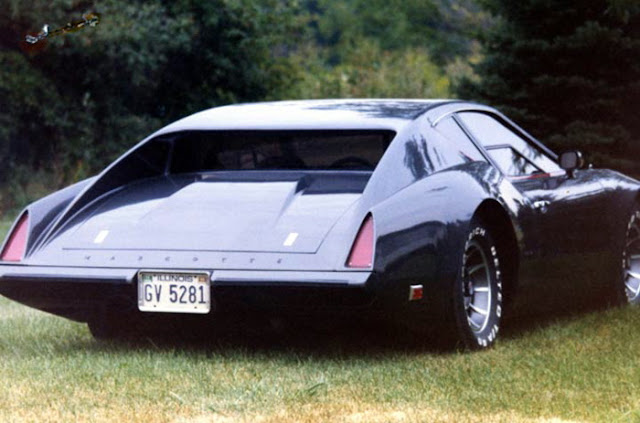The Ventura story
 |
| The Ventura GT (image via Quattro Rodas) |
L'Automobile Distribuidora de Veículos Ltda. was created in 1975, in São Paulo (SP), by Argentines Claudio Campuzzano and Guillermo Pardo, with the aim of manufacturing replicas of historic cars. Two cars were planned, both with mechanics Volkswagen Brasília. These were to be replicas of the Type 35 Bugatti and Alfa Romeo P3, but only the Alfa was originally released (Other replicas followed later but are not the subject at hand).
At the 11th National Motor Show in São Paulo (1978), L'Automobile presented its second creation, a 2+2 coupe called the Ventura. This car was also based on a VW Brasilia platform, equipped with the engine of the type-2. With elegant lines and a high quality finish, the car featured a full instrument panel, leather upholstery, and three-point retractable seatbelts. The car was only 4.14m long although it looked longer. The front fascia included rectangular headlights from the Dodge Polara and, in the rear, the taillights of an Alfa Romeo SL.
 |
| The Ventura GT (image via Quattro Rodas) |
Thanks to the variant II's flat engine, there was plenty of luggage space in the rear compartment. However, this reliable but discreet VW drivetrain didn't offer the kind of performance implied by the automobile's sporty design. The initial production was eight units per month, with some of them exported to Europe and the USA.
In 1981, L'Automobile attempted to rectify the performance shortcomings of the Ventura in a new "RS" version. This RS version was equipped with the more modern Passat 1.6 four-cylinder inline water cooled engine, still rear mounted. Shortly thereafter the car received its first aesthetic update, gaining four smaller rectangular headlights (from the Passat) and the beaded taillights of the Ford Corcel II.
 |
| The Ventura RS |
Soon Brazil found itself in the midst of recession, and the automobile industry went through one of the most serious sales declines in its history. On the periphery of this, small manufacturers suffered even more. In early 1983, with production reduced to a third, L'Automobile owners decided to close the company and put the molds and designs of their cars up for sale.
Those materials were purchased by L'Auto Craft Vehicle Assembler Ltda., who almost without interruption resumed manufacturing in new facilities, in Barra do Piraí (RJ). All models were kept in line and the Ventura with Passat engine was relaunched as the "GTS" model.
The new engine required the installation of a radiator and increased ventilation, causing some changes that resulted in some poorly resolved aesthetic details, such as; a heavy black frame surrounding the grille, the triangular plastic vents now occupying the b-pillar, and the additional air intakes next to the rear wheels. The rear trunk also had to be eliminated, as the new motor occupied all the available volume.
Further complicating the space problem, the fuel tank was moved forward to the front of the car, significantly reducing the already small volume of the front trunk. The rear windshield was reduced in length and made more vertical to allow more ventilation to the engine cover.
Ironically, despite all of this, the new engine only offered a marginal improvement to the car's performance. The following year, L'Auto Craft prepared a convertible derived from Ventura for the 13th National Motor Show. It also replaced the Passat engine with a new Alfa Romeo 1.8.
By 1990 the Ventura went out of production, but the company continued producing its various replica models as well as a car based on the San Matilde (called the Sabre) until 1997. At that time, after a decade and a half of manufacturing cars, L'Auto Craft closed its doors.
Sources:
Quattro Rodas Magazine











The 'power bulge' on the bonnet LOL
ReplyDelete